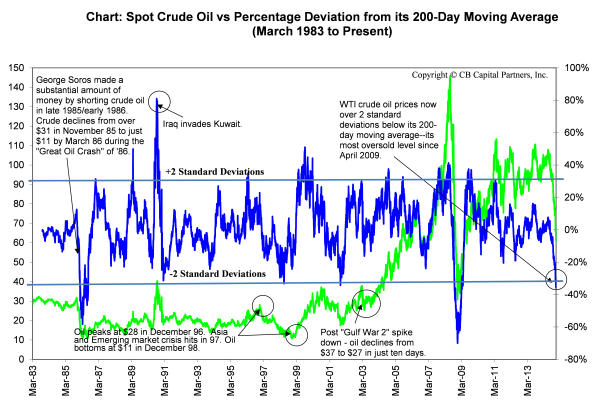Cramer Signs That Oil Will Stabilize
Post on: 16 Март, 2015 No Comment

Commodities | Energy
Jim Cramer
Stock quotes in this article:
mpc
Maybe we get a bottom in oil when demand exceeds supply? I know that sounds pretty obvious, given what we know about commodities. But it has been surprisingly absent in the discourse during the crude crash we’ve had these last few weeks.
Until I heard it last night from the CEO of Marathon Petroleum (MPC), which owns 8000 gasoline stations in this country under the Marathon, Speedway and Hess nameplates. That’s right, Gary Heminger, whose company transports and retails and refines just about more gasoline than anyone in this country, has said that demand’s already rising as gasoline trades around $3 and at $2.50, where it might be headed. Because the actual price lags the crude, you might see a surprising pick-up in the usage of gasoline, which will cause it to stabilize.
That’s right, the one thing we have presumed throughout this debate is that there simply isn’t any price that could actually stimulate demand. Think about it. You hear about the dollar impacting price. You hear about how Europe and China aren’t using as much as before. You hear about how there aren’t as many supply disruptions as expected. You hear about how speculators are full up.
But you never hear that if you cut the price enough, people will use more, and yet that’s actually starting to happen with most recent same store sales up 1% for Marathon, a very important number which indicates rising volume as prices go lower.
How can that be?
Heminger postulated some reasons. First, because the price got so high, we became much more attuned to carpooling. We are all environmentalists now, so maybe no one wants to hear this, but with prices going down people abandon carpools. Heminger, obviously a student of supply and demand, has said that’s an empirical observation from many years in the business. Second, you can see it in the kinds of cars and trucks people are buying: SUV sales are way up.
Third, those with a long commute switch back from public transit.
Fourth, economic growth flows through, causing more gasoline use. It’s a virtuous circle for all but the people who hate fossil fuels so much that they would rather see people out of work than see gasoline use climb.
Heminger says that the surprising thing about lower gasoline prices is that once people think they are sticking, which is what his read says is starting to happen, then behavior does change. People like to drive and they like to take trips and gasoline prices matter a great deal in that equation, too, he says.
Plus, he points out, if you look around the nation’s storage facilities, they are surprisingly lean given the talk of all of this glut. It’s just not as stuck in the system right now as people think.
Now, to be sure, Marathon wants the price of West Texas low enough so he can exploit the difference between the local price and the world price, because gasoline is a global market and it can be refined here but sent to the highest bidder internationally. He doesn’t want our oil exported until we are more in balance with demand and does point out that despite all of the talk of energy self-sufficiency, we are still importing 7.4 million barrels a day. He points out that it’s a tough political issue. What politician wants to get behind the issue of exporting if oil suddenly jumps up in price? So, don’t expect a quick end to the export ban.
All that said, the idea that oil can plummet through to the $60s has to be called into question when you consider the numbers Heminger’s seeing. More use equals more demand more demand means stable price.
Maybe not here.
But judging by Marathon’s numbers, not that far from here.














